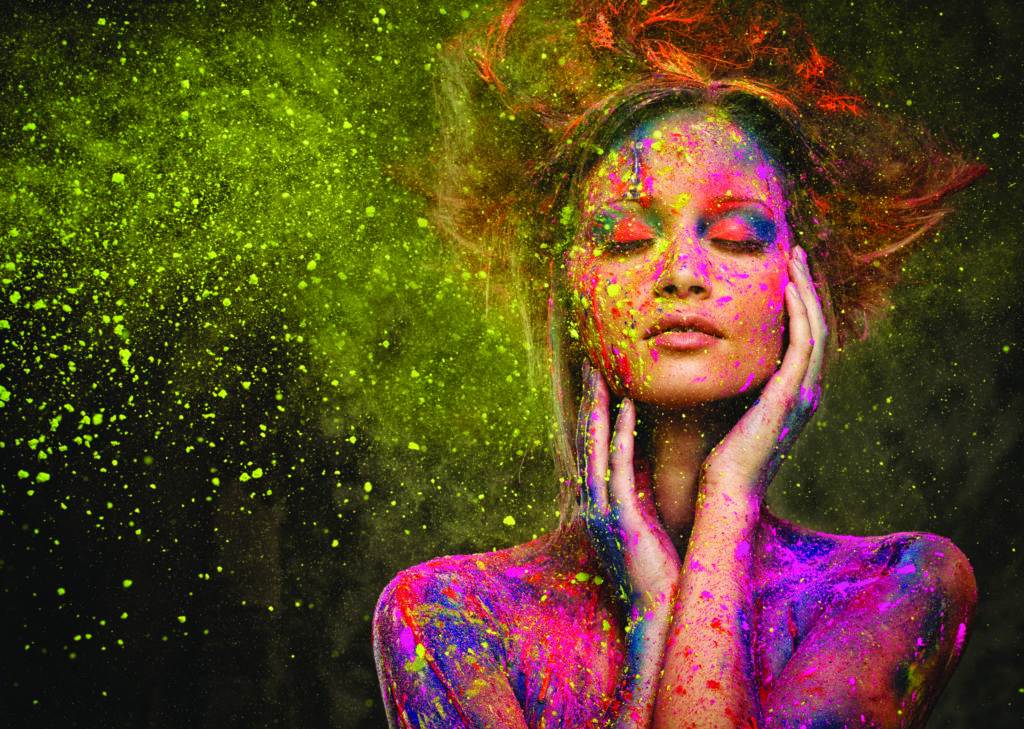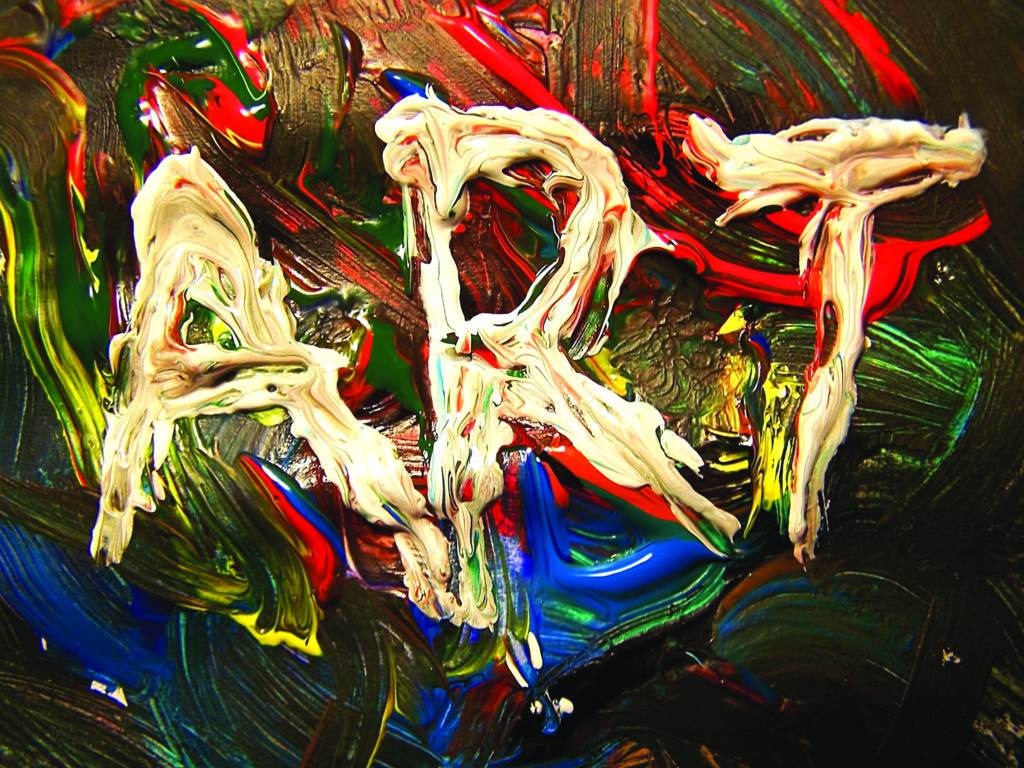BY KIMERER LAMOTHE
Art is not a luxury. In the wake of the 2016 election, making and appreciating art of all kinds is more important than ever. It is vital to our humanity.
For many, the election catalyzed a shocking revelation that the world in which they are living is different than they thought, and it is not a world in which they want to be. For many, a world burst into view in which constitutional values, basic human rights, and the health of the planet itself are no longer guaranteed but under siege.
Faced with such a reality, it is easy to feel hopeless and powerless. Familiar strategies for propping up mental well-being fall flat. It seems impossible to find a silver lining. There is no bright side or cup half full. More is needed than an uneasy accommodation, but what? What is an artist to do?
In the week after the election, I was ready to quit making art and run for political office. I wanted concrete change, now! But then I stepped back and thought again. The arts are not just an add-on to the work of life. Art making is not just an activity in which we can choose to engage once the business of the day is done. Nor is art some pinnacle of human culture that we must fight to protect.
Art enables the fight in the first place. Making and experiencing art is the primary way that people keep alive the distinctly human capacity of creating the worlds in which they can live. In fact, art is the human activity with the potential to educate us to think and feel and act in ways that honor actual bodily selves and the more-than-human earth.
Works of art can do many things. Different media have different strengths. And while art can communicate specific political positions, its real power lies elsewhere—in its relation to dance.
Works of art in any medium exercise kinetic creativity—a human ability to create and become patterns of movement—that funds any and all conscious action to make a world in which we want to live. Below, four perspectives on what art can do come together as dimensions of a fifth.

1. Art can make visible and visceral the human cost of human actions.
Perhaps most obviously, art can open our eyes to oppressive dynamics in which we are complicit. Whether the work in question is the musical West Side Story or Harriet Beecher Stowe’s Uncle Tom’s Cabin, Arthur Miller’s play The Crucible, Picasso’s Guernica, or Martha Graham’s Heretic, art makes visible the patterns of movement that humans are making in relation to one another, and illuminates the kinds of relationships and experiences those movement patterns are creating.
Moreover, it does so not in an antiseptic way but by putting us in touch with the bodily cost. Art works with and through the human senses—we are moved to move with others. We empathize with the bodily experiences of others in such a way that we find ourselves laughing, crying, protesting, squirming, aching, and owning up to our own complicity in the systems that produce that pain for other humans, animals, and the earth itself.
When the sole woman in white in Graham’s Heretic collides again and again against the wall of black figures ringed around her—when she finally collapses to the floor at their feet—the dance calls us to identify with both the pain of the woman in white and with the unyielding stance of her choir. The tension ignites a desire to move otherwise.
2.Art can hold open a space for human freedom.
By contrast, art can also do the exact opposite, by providing us with a back door through which we can flee from pain and suffering and escape into a fantasy world. A dense novel, a horror film, a beautiful painting, or a cabaret show can offer up a bouquet of entertaining, entraining sounds and sights and sensory experiences that rouse and dazzle.
In doing so, such works of art affirm human freedom—they keep alive a space for play, for surprise, and for the unexpected emergence of poignant possibilities. They provide an occasion to feel our feelings—not as a response to a particular problem, but because it is good and fun to feel them—even when those feelings include anger or fear or wrenching sadness.
In freeing our feelings, art releases the tension, the sense of being bound or oppressed that comes from living in a foreign world. We open to a fuller range of ourselves. We breathe again, deeply.
3.Art can offer alternative visions.
The most challenging task for art, perhaps, is to offer alternative visions of worlds we, individually and collectively, may want to create.
Often these visions emerge in the context of a tragic narrative as a story of someone who resisted, as in the film Schindler’s List. They emerge as a valiant affirmation of life ringing out in the midst of war, as in Tchaikovsky’s 1812 Overture. They appear in contrast to tradition, as in The Dinner Party by Judy Chicago, where women throughout history not only have a seat at the table but their own woman-affirming plate.
Here the depiction of human cost provides a context in which to affirm and redouble our commitment to values and actions—to patterns of movement that will bring into being a nexus of human relationships that will not re-create the same patterns of pain.
4.Art can serve as a focal point for shared experience.
A work of art draws people to it—not everyone, but some people. And while no two people will experience a painting or a play, a short story or a symphony in the same way, they can share in the experience of being moved by it. The work of art, by its very existence, creates a community out of the people who are pulled into its orbit and respond.

Where an artwork—regardless of whether it stages a revelation, revolution, or escape—succeeds in moving people to feel and think differently, the relationship among these people changes. Not only do they have something to talk about, they recognize one another as the people who have been moved together—even as the multiracial cast of Hamilton catapults white viewers into new conversations about their historical dependence upon nonwhite artists and communities.
Any work of art becomes an occasion for creating relationships among and between art ists and viewers that reverberate with whatever shared experiences of empathy and freedom the work induces.
Art can quicken kinetic creativity.
None of these four potentials are mutually exclusive, and all work together as dimensions of an underlying service that all art provides to some degree: art catalyzes conscious participation in the rhythm of creating and becoming patterns of bodily movement that every human is. This kinetic creativity is the source of a human ability to love.
In order to create the world in which we can and want to live, we need to feel the pain of what is not working as precisely as possible, we need to know the power of our own movement making, we need to field impulses to move that align most closely with the world in which we want to live, and we need constantly to cultivate a sensory awareness of the communities we are creating.
By making visible and visceral the pain of others, art can focus kinetic creativity on sites of possible action and catalyze desire to move in ways that will heal that pain.
By energizing feelings of freedom, art can boost the mental, emotional, and physical resources available for action.
By offering alternative movement patterns, art can inspire impulses to move that will respond to a given situation in effective and efficient ways.
By creating opportunities for people to come together, works of art can help create the communities in which people support each other in finding ways to move that will not re-create the patterns of movement that produce pain in themselves and others.
Art is vital—not just to instill hope but to keep alive the ability to feel hope, not just to express love but to keep alive the capacity to know love, not just to encourage empathy but to keep alive the sensory responsiveness that empathy requires, not just to build relation ships with and among others but to keep alive the sensory discernment needed to ensure that whatever relationships we create are and will be mutually life-enabling.
Art is thus vital to the project of creating a world in which everyone—regardless of state or party or political preference—receives what they need in order to keep making the movements that will unfold what they have to give.
While not everyone pursues a career as an artist, everyone is creative every day. In making art and appreciating art, we protect and practice and keep alive the possibility of moving together, in respectful relationships with others, into a new earth-friendly world.
Kimerer L. LaMothe, PhD, is a dancer, philosopher, and author of five books, including Why We Dance: A Philosophy of Bodily Becoming. She also has a monthly blog on PsychologyToday.com, and is currently writing her first musical. KimererLaMothe.com